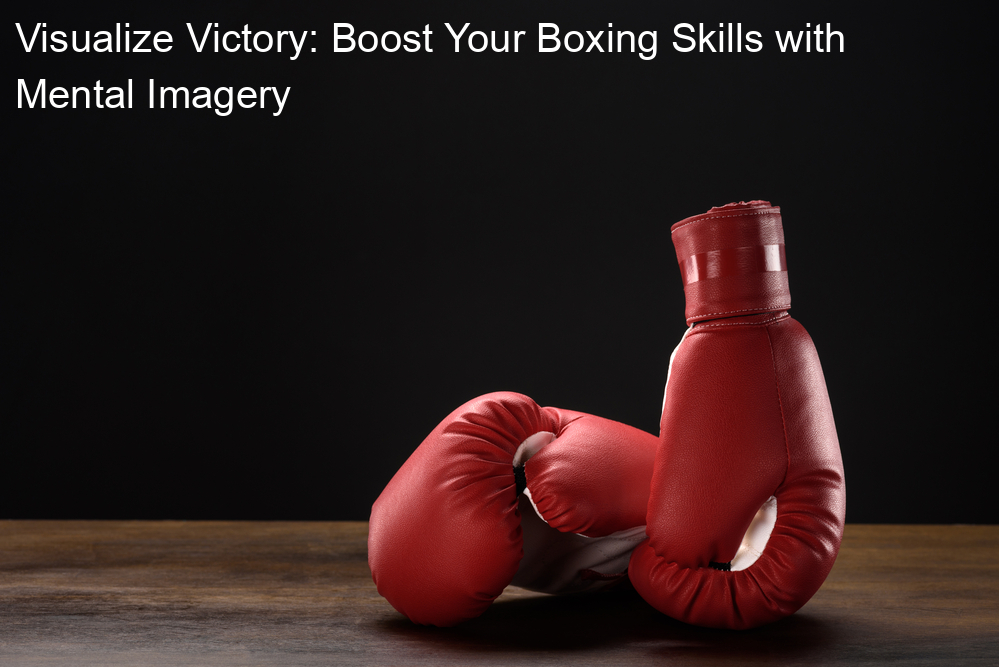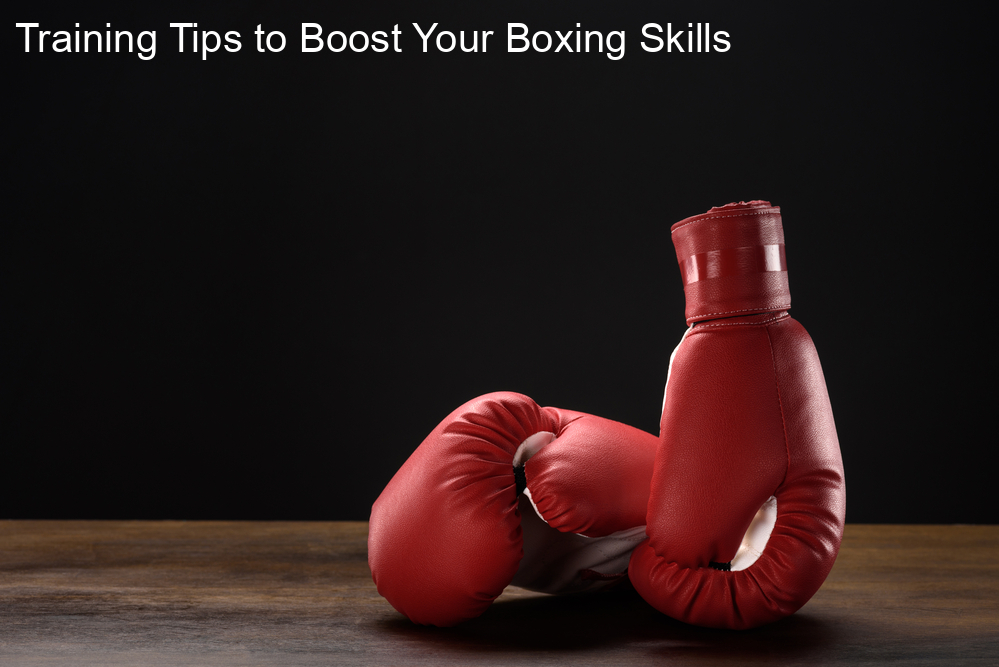
Introduction: The Power of Visualization in Boxing
Boxing is not just about physical strength and speed. Mental training plays a huge role too. One powerful mental tool is visualization. Let’s explore what it is and how it helps boxers.
- The role of mental training in boxing: Mental training helps boxers stay focused and calm. It prepares their minds for the challenges in the ring. This is as important as physical training.
- Understanding the concept of visualization: Visualization means picturing yourself doing something in your mind. For boxers, this means imagining their moves, their opponent, and the fight itself. It’s like a mental rehearsal.
- Benefits of boxing visualization techniques:
- Improved Performance: Boxers who visualize their fights often perform better. They feel more prepared and confident.
- Reduced Anxiety: Visualization helps reduce pre-fight nerves. Boxers feel calmer and more in control.
- Better Focus: By visualizing, boxers can improve their focus. They can concentrate better on their strategies and techniques.
Visualization can make a big difference in a boxer’s performance. It’s a simple but powerful tool that every boxer should use.
How to Improve Boxing Skills with Visualization
Understanding the Mind-Body Connection
- How mental imagery influences physical performance:Mental imagery, or visualization, helps boxers improve their skills by creating a mental picture of their actions. When boxers visualize their moves, their brains send signals to their muscles, just like when they physically practice. This helps improve muscle memory and coordination.
- Case study: Famous boxers who use visualization:Many famous boxers use visualization to enhance their performance. For example, Muhammad Ali often imagined himself winning fights before stepping into the ring. He believed that seeing his success in his mind helped him achieve it in reality.
| Boxer | Visualization Technique |
|---|---|
| Muhammad Ali | Imagining victory and successful punches |
| Mike Tyson | Visualizing aggressive and powerful moves |
Visualization Exercises for Boxers
-
Exercise 1: Visualizing the Perfect Punch
Close your eyes and imagine throwing the perfect punch. Picture your stance, the movement of your arm, and the impact on your opponent. This helps you understand the mechanics and improve your technique.
Tip: Focus on every detail, from your breathing to the position of your feet.
-
Exercise 2: Imagining the Fight Scenario
Think about a real fight situation. Visualize your opponent, the ring, and the crowd. Imagine different moves and how you will counter them. This prepares you mentally for actual fights.
Example: Famous boxer Muhammad Ali often visualized his fights before stepping into the ring.
-
Exercise 3: Visualizing Victory
Picture yourself winning the match. Imagine the referee raising your hand, the cheers from the crowd, and the feeling of success. This boosts your confidence and motivation.
Quote: “If my mind can conceive it, and my heart can believe it—then I can achieve it.” – Muhammad Ali
Enhance Boxing Performance: Advanced Visualization Techniques
Boxing Training Visualization
Visualization is a powerful tool for boxers. It helps improve performance by mentally practicing moves and strategies. Here’s how you can use visualization in your training routine.
- How to incorporate visualization into your training routine:Start by finding a quiet place where you can focus. Close your eyes and imagine yourself in the ring. Picture every detail, from your stance to your opponent’s movements. Practice this for 10-15 minutes daily.
Here are some steps to get started:
- Find a quiet and comfortable place.
- Close your eyes and take deep breaths.
- Visualize yourself in the ring, performing your best moves.
- Imagine different scenarios and how you would react.
- Visualization drills for boxing:Visualization drills are specific exercises to enhance your mental practice. These drills can help you prepare for different situations in the ring.
Here are a few drills to try:
Drill Description Shadow Boxing Imagine an opponent and practice your moves against them. Fight Simulation Visualize a full match, from start to finish, including breaks and strategies. Defense Drills Picture yourself dodging and blocking attacks.
Mental Training for Boxers
-
Technique 1: Guided Imagery
This is a powerful tool for boxers. It involves visualizing yourself in the ring, executing perfect punches, and dodging your opponent’s moves. This technique helps improve your confidence and mental readiness.
For instance, Muhammad Ali often used guided imagery to see himself winning fights. Studies show that athletes who use visualization can improve their performance by up to 10%.
-
Technique 2: Self-talk and Affirmation
These are about using positive words to boost your confidence. Telling yourself “I am strong” or “I can win” can make a big difference. This technique helps you stay focused and motivated.
Boxers like Mike Tyson have used self-talk to stay positive and overcome challenges. Research indicates that positive self-talk can reduce anxiety and improve performance.
-
Technique 3: Mindfulness and Focus Training
This training teach you to stay in the moment. This means paying attention to your breathing and staying calm, even under pressure. It helps you react quickly and make better decisions in the ring.
Many athletes use mindfulness to improve their focus. Studies show that mindfulness can enhance attention and reduce stress, making it a valuable tool for boxers.
Boxing Skill Enhancement: Visualization Strategies for Fighters
Creating a Personal Visualization Routine
Visualization is a powerful tool for boxers. It helps improve focus, technique, and confidence. Let’s explore how to create a personal visualization routine.
- How to develop a daily visualization practice:Start by setting aside 10-15 minutes each day. Find a quiet place where you won’t be disturbed. Close your eyes and imagine yourself in the ring. Picture every detail: the crowd, the lights, and your opponent. Visualize your movements, punches, and defenses. See yourself succeeding.
- Key takeaways: The importance of consistency and belief:Consistency is key. Practice visualization daily to make it a habit. Believe in the process. Studies show that athletes who visualize regularly perform better. Remember, your mind is a powerful tool. Use it to your advantage.
| Tip | Details |
|---|---|
| Set a Routine | Visualize at the same time each day to build a habit. |
| Be Detailed | Include all senses in your visualization for a more vivid experience. |
| Stay Positive | Always see yourself winning and performing well. |
As the famous boxer Muhammad Ali once said, “The fight is won or lost far away from witnesses – behind the lines, in the gym, and out there on the road, long before I dance under those lights.” Visualization is part of that preparation. Start today and see the difference it makes in your boxing skills.
Overcoming Challenges in Visualization
- Challenge 1: Difficulty in creating clear imagesMany boxers find it hard to create clear images in their minds. This can make visualization less effective. To overcome this, start with simple images. For example, picture yourself throwing a jab. Over time, add more details like the movement of your feet and the reaction of your opponent.
Using real-life experiences can help. Think about a past fight or training session. This can make the images in your mind clearer.
- Challenge 2: Maintaining focus during visualizationStaying focused can be tough. Your mind might wander. To help with this, find a quiet place. Close your eyes and take deep breaths. This can help you stay focused.
Set a timer for short sessions. Start with 5 minutes and slowly increase the time. This can help you build your focus over time.
- Challenge 3: Translating visualization into physical performanceIt can be hard to turn what you see in your mind into real actions. Practice is key. After visualizing, try the moves in real life. This can help your brain connect the images to your muscles.
Work with a coach or trainer. They can give feedback and help you improve. Remember, practice makes perfect.
| Challenge | Solution |
|---|---|
| Difficulty in creating clear images | Start with simple images and use real-life experiences |
| Maintaining focus during visualization | Find a quiet place, take deep breaths, and set a timer for short sessions |
| Translating visualization into physical performance | Practice moves in real life and work with a coach |
Conclusion: The Future of Boxing and Visualization
As we look ahead, the role of visualization in boxing is set to become even more important. Let’s explore some key points about the future of boxing and mental training.
- The growing recognition of mental training in sports: More athletes and coaches are starting to see how mental training can boost performance. This includes visualization, which helps boxers prepare for fights and improve their skills.
- How visualization techniques can continue to evolve: Visualization methods are always changing. New research and technology can help boxers use these techniques in better ways. This might include virtual reality or advanced brain training tools.
- Final thoughts on improving boxing skills with visualization: Visualization is a powerful tool. It helps boxers see their success before it happens. By practicing in their minds, they can get better in the ring. This makes visualization a key part of training for the future.
In summary, visualization is not just a trend. It is a valuable part of boxing training that will keep growing. As more people understand its benefits, we can expect to see even more amazing performances in the sport.
| Key Point | Details |
|---|---|
| Recognition | Mental training is gaining more acceptance in sports. |
| Evolution | New techniques and technology will enhance visualization. |
| Impact | Visualization helps boxers improve their skills and performance. |





